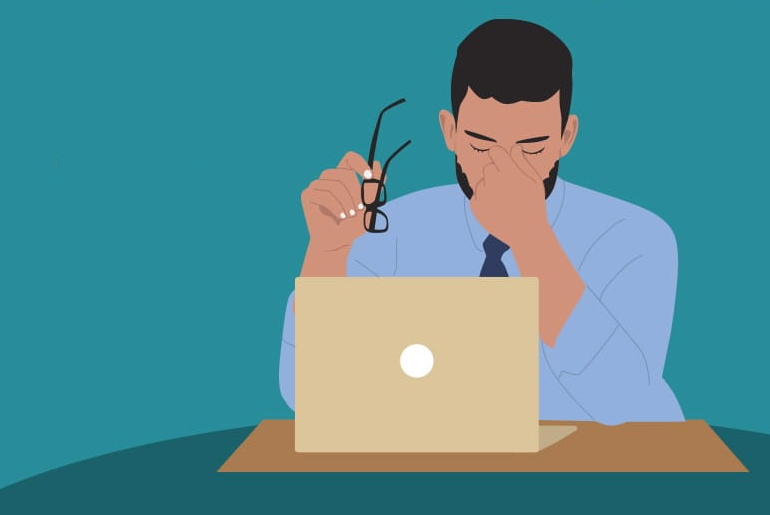Digital eye strain, also known as computer vision syndrome (CVS), is a growing concern in modern work environments due to the increasing reliance on digital screens. Whether scheduling meetings, working on laptops, or attending video conferences, many workers face extended periods of screen exposure, which leads to discomfort and health issues. Studies indicate that over 50% of people who work with computers experience some level of eye strain. The effects are particularly pronounced for those working from home, where prolonged screen use is often necessary. The constant need to focus on a fixed distance while using screens can lead to accommodative stress, further exacerbating the strain on the eyes.
With technology becoming an essential part of daily work life, eliminating screen time is not a feasible solution. However, the consequences of digital eye strain, such as headaches, blurred vision, dry eyes, and discomfort, need to be addressed to prevent long-term damage. Adopting practices such as taking regular breaks, adjusting screen brightness, and ensuring proper ergonomics can help manage the strain while maintaining a healthy relationship with technology. It is essential for workers to recognize the signs of eye strain and take proactive steps to protect their eye health, especially in environments where screen use is unavoidable.
Effects of eye strain:
Prolonged exposure to digital screens can significantly weaken the eye muscles, particularly those responsible for focusing. This constant strain exhausts the muscles, leading to discomfort, blurry vision, and difficulty shifting focus from close to distant objects. Over time, these effects can escalate, resulting in headaches and persistent visual disturbances. The strain caused by screens can also contribute to binocular vision stress, where the eyes struggle to work together to maintain clear, focused vision at close range. This extra effort can result in symptoms such as double vision or the sensation that the eyes are misaligned, further worsening the discomfort associated with prolonged screen use.
Another common issue linked to extended screen time is dry eye syndrome. While using digital devices, the frequency of blinking often decreases, which reduces tear production and accelerates tear evaporation. This can lead to dryness, irritation, redness, and a gritty sensation in the eyes. If these symptoms persist without proper intervention, they can increase the risk of more serious issues like corneal damage and chronic eye discomfort. Thus, addressing digital eye strain and adopting healthy screen habits are essential to preventing long-term harm to eye health.
Relieving eye strain:
Relieving eye strain from digital screens is essential for long-term eye health, especially with increased screen time. Here are simple yet effective techniques:
- 20-20-20 Rule: Fixating on screens for long periods is a common cause of eye strain. Dr. Sharma recommends the 20-20-20 rule: every 20 minutes, take a 20-second break to focus on something 20 feet away. This practice helps prevent fatigue and supports better screen habits.
- Optimize Screen Settings: Many people don’t realize their screen’s brightness, contrast, and text size may strain their eyes. Adjusting these settings for comfortable viewing, as Dr. Sharma advises, can reduce the pressure on your eyes and ease discomfort.
- Sync Ambient Light with Screen Light: Working in a well-lit space is crucial. Dr. Sharma emphasizes matching the ambient lighting with the brightness of your screen to avoid glare and reduce eye strain. Proper lighting prevents discomfort caused by contrasting brightness levels.
- Use Eye Drops for Dry Eyes: Long periods of screen time can lead to dry, itchy eyes. Lubricating eye drops or artificial tears, as suggested by Dr. Sharma, can relieve these symptoms and provide comfort.
- Blink Frequently: Screens can reduce your natural blink rate, causing dryness. Dr. Sharma encourages frequent blinking to keep the eyes moist and to give them short breaks from the screen.
Incorporating these habits will help protect your eyes from strain and discomfort over the long term.
Disclaimer:
The information contained in this article is for educational and informational purposes only and is not intended as a health advice. We would ask you to consult a qualified professional or medical expert to gain additional knowledge before you choose to consume any product or perform any exercise.







